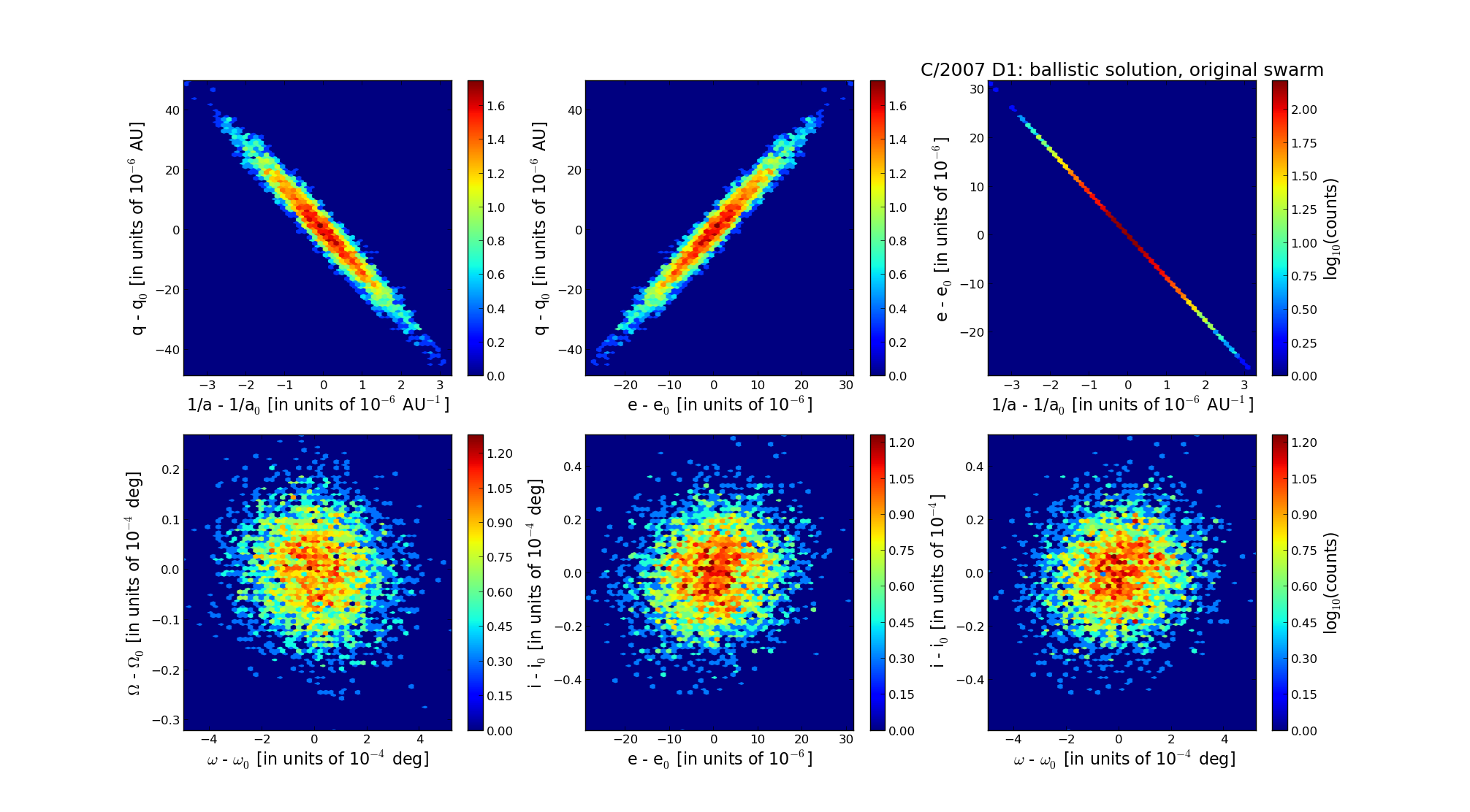| Solar System Dynamics & Planetology Group |
 |
C/2007 D1 LINEAR |  |
| Solar System Dynamics & Planetology Group |
 |
C/2007 D1 LINEAR |  |
| number of observations | 548 |
| number of residuals | 1061 |
| data interval | 2007 Feb. 17 — 2013 May 4 |
| rms [arcsec] | 0.45 |
| orbit quality class | 1a+ |
| Epoch (TT) | 20070629.0 | = JD 2454280.5 |
| time of perihelion passage (TT) | 20070619.460865 | ± 0.002729 |
| perihelion distance | 8.79372556 | ± 0.00001369 |
| eccentricity | 1.00191986 | ± 0.00000846 |
| argument of perihelion [deg] | 340.159247 | ± 0.000141 |
| longitude of the ascending node [deg] | 171.098537 | ± 0.000008 |
| inclination [deg] | 41.450252 | ± 0.000013 |
| inverse semimajor axis [10-6 au-1] | -218.32 | ± 0.96 |

| Epoch (TT) | 16950515 | |
| time of perihelion passage (TT) | 20070619.627616 | ± 0.002693 |
| perihelion distance | 8.79200698 | ± 0.00001358 |
| eccentricity | 0.99961354 | ± 0.00000832 |
| argument of perihelion [deg] | 340.120329 | ± 0.000140 |
| longitude of the ascending node [deg] | 171.125352 | ± 0.000008 |
| inclination [deg] | 41.426988 | ± 0.000014 |
| inverse semimajor axis [10-6 au-1] | 43.96 | ± 0.95 |
| Epoch (TT) | 23280626 | |
| time of perihelion passage (TT) | 20070614.544250 | ± 0.002784 |
| perihelion distance | 8.78831161 | ± 0.00001367 |
| eccentricity | 0.99351095 | ± 0.00000831 |
| argument of perihelion [deg] | 339.973968 | ± 0.000144 |
| longitude of the ascending node [deg] | 171.029787 | ± 0.000008 |
| inclination [deg] | 41.507970 | ± 0.000014 |
| inverse semimajor axis [10-6 au-1] | 738.37 | ± 0.95 |